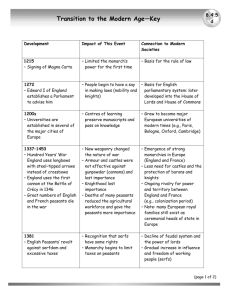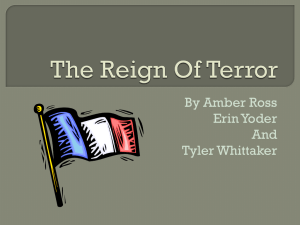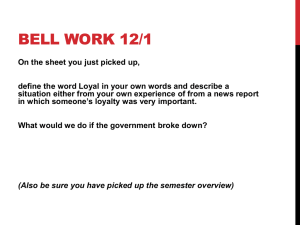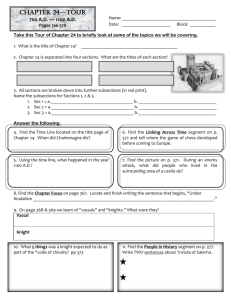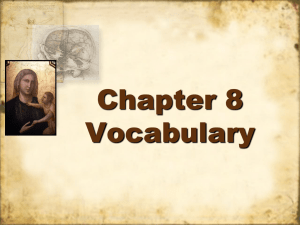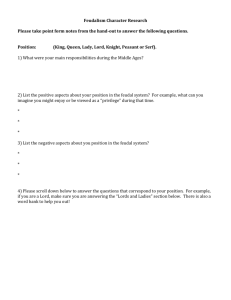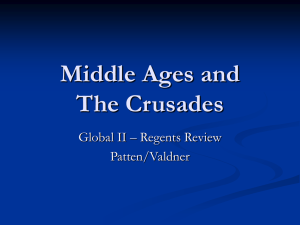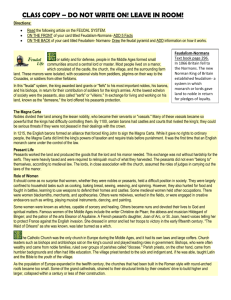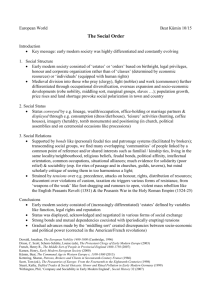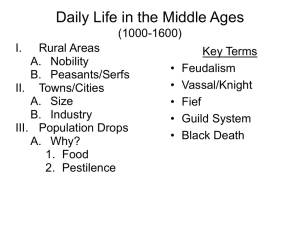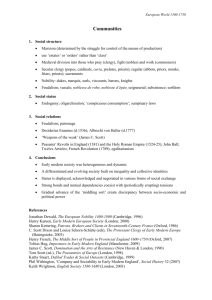Examples vs. Non-Examples
advertisement
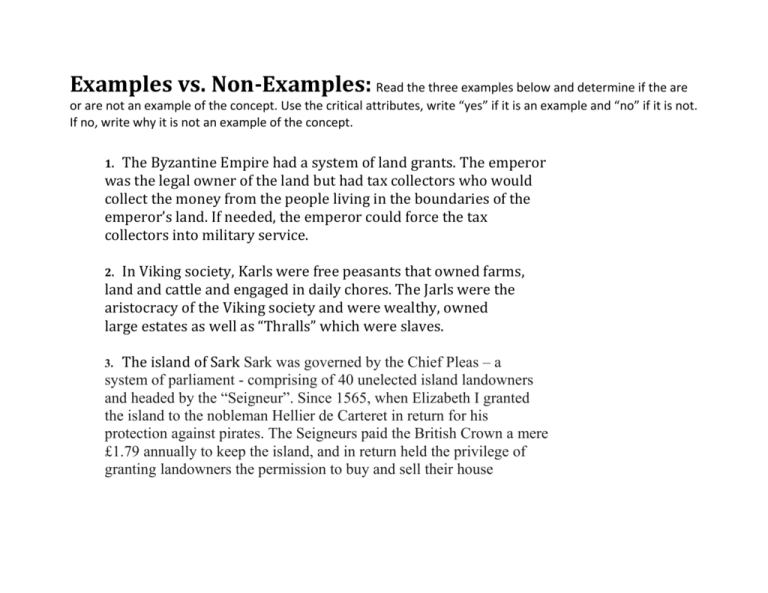
Examples vs. Non-Examples: Read the three examples below and determine if the are or are not an example of the concept. Use the critical attributes, write “yes” if it is an example and “no” if it is not. If no, write why it is not an example of the concept. The Byzantine Empire had a system of land grants. The emperor was the legal owner of the land but had tax collectors who would collect the money from the people living in the boundaries of the emperor’s land. If needed, the emperor could force the tax collectors into military service. 1. In Viking society, Karls were free peasants that owned farms, land and cattle and engaged in daily chores. The Jarls were the aristocracy of the Viking society and were wealthy, owned large estates as well as “Thralls” which were slaves. 2. The island of Sark Sark was governed by the Chief Pleas – a system of parliament - comprising of 40 unelected island landowners and headed by the “Seigneur”. Since 1565, when Elizabeth I granted the island to the nobleman Hellier de Carteret in return for his protection against pirates. The Seigneurs paid the British Crown a mere £1.79 annually to keep the island, and in return held the privilege of granting landowners the permission to buy and sell their house 3. Examples of Concept 12th In century England, King Henry I was the absolute ruler of all the land. King Henry gave Baron Charles an enormous estate just south of London to with what he pleased. Baron Charles then allocated some of this land to his son, a Knight. Several peasants came to the Knight looking for land. He came to a agreement with them in which he would allow them to live on the land if they would agree to fight for him, his father and the king if conflict would arise, they agreed. Who are the parties involved? King Henry What is the product given? What service is offered? Land Military Service Is there a hierarchy structure involved? Baron Charles Yes A Knight Peasants The Capetian Dynasty in France ran from 987-1328. The Capetian Kings gave land surrounding Paris to Great Lords. These Great Lords allowed peasants to farm and live on the land in exchange for military protection as well as royal dues and taxes for the king Capetian Kings In the Holy Roman Empire the King gave estates to Crown Vassals known as Kronvasallen. They would in turn give these estates to lower vassals or Untervasallen. The Untervasallen would give the land to unfree famers in exchange for cultivation and a place to stay. King Land Great Lords Caretaking of land Military service Peasants Royal dues and taxes Land Caretaking of land Kronvasallen Untervasallen Unfree farmers Yes Shelter Yes
